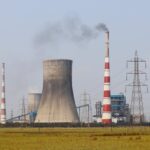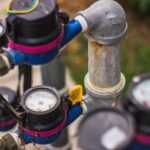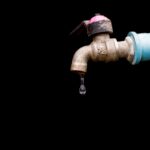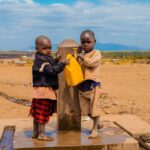Why Access to Clean Water is a Basic Human Right
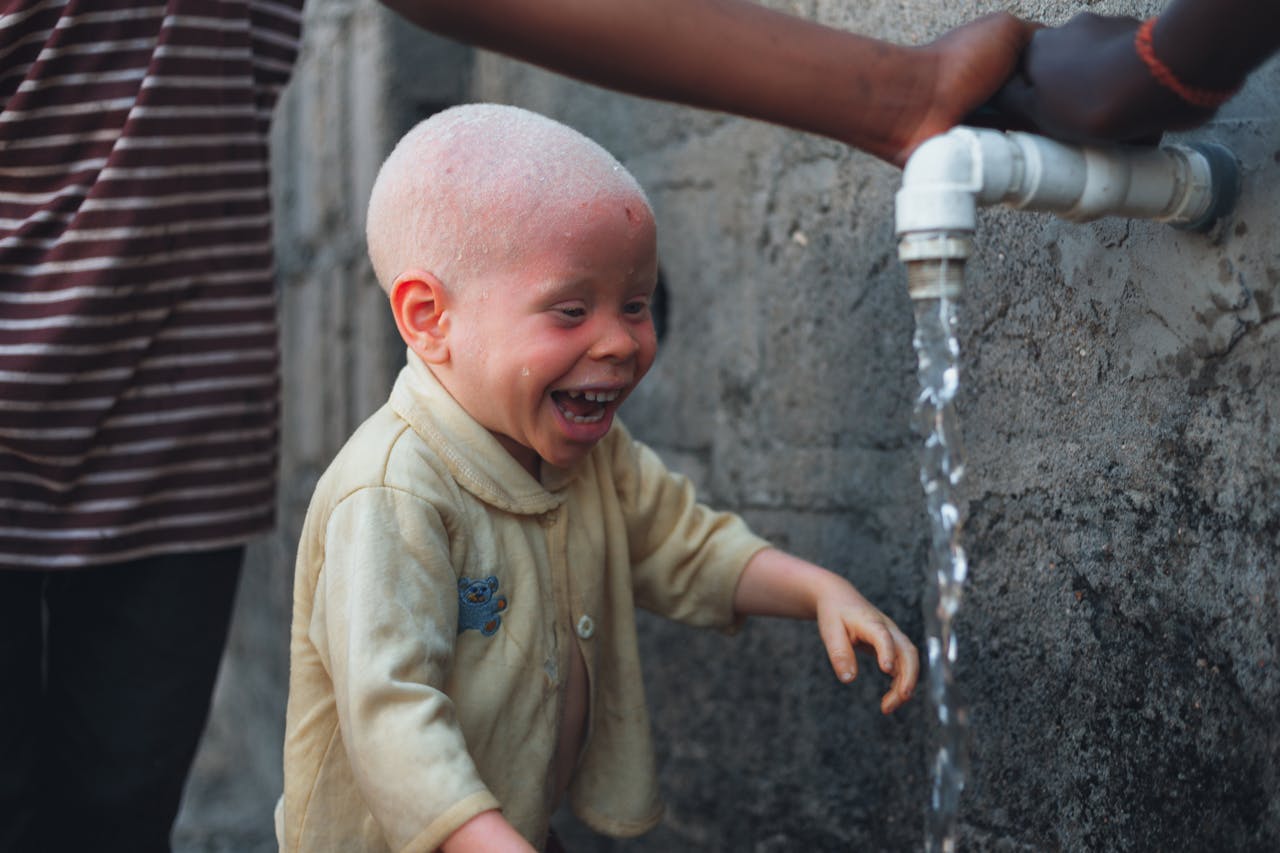
Water touches nearly every part of daily life, from a glass of water on the table to the food we cook and the hygiene routines we follow. Yet, nearly a quarter of the global population still struggles with access to clean, safe water. This isn’t just a matter of convenience; it’s a matter of health, dignity, and fairness.
In this article, we will see why access to clean water is a fundamental human right and why safeguarding it is essential for everyone, everywhere.
The Significance of Clean Water for Life
At its core, access to clean water touches every aspect of life. It’s foundational for drinking, cooking, sanitation, and hygiene. The ability to use clean water is not a luxury, but a basic need, essential for maintaining good health and a sustainable environment.
● Basic Survival Needs: Water is crucial for hydration and safe food preparation. Without clean water, cooking and washing produce becomes risky, exposing individuals to harmful bacteria and parasites. Communities without access to clean water often face higher levels of malnutrition, as contaminated water can cause nutrient absorption issues.
● Health and Disease Prevention: The link between clean water and public health cannot be overstated. Contaminated water is a major source of waterborne diseases, such as cholera, dysentery, and typhoid. These diseases are preventable, yet they remain prevalent in areas without access to safe water, leading to millions of deaths annually. Clean water can prevent these illnesses, improve immune response, and reduce child mortality, particularly in under-resourced regions.
● Environmental Impact: Clean water access is also vital for healthy ecosystems. Water pollution disrupts wildlife habitats, affects agricultural productivity, and deteriorates water sources for communities. Protecting water quality supports biodiversity, soil health, and sustainable agriculture, ensuring that natural resources remain available for future generations.
The Role of Clean Water in Public Health
Clean water access is not just a preventive measure for individual health, it’s also a foundation of public health. When communities can rely on safe water, the ripple effects are of extensive impact.
● Preventing Disease: When people have clean water, the likelihood of infection drops significantly. Waterborne diseases are among the leading causes of preventable illness worldwide, and they create a vicious cycle of sickness and poverty. Clean water breaks this cycle, reducing hospitalizations, preventing outbreaks, and creating healthier communities.
● Supporting Healthcare Systems: In areas where healthcare resources are already stretched thin, clean water access can make all the difference. When people aren’t continually battling preventable illnesses from unsafe water, healthcare systems can focus on other pressing needs. Additionally, clean water in healthcare facilities is critical for proper hygiene and sanitation, ensuring that hospitals, clinics, and health centers can provide safe care to patients.
● Protecting Vulnerable Populations: Children, elderly people, and those with weakened immune systems are particularly vulnerable to the effects of contaminated water. In children, for example, repeated exposure to unsafe water can stunt growth, impair cognitive development, and lead to lifelong health issues. Ensuring clean water access protects these vulnerable groups, improving overall community health and reducing inequalities in health outcomes.
Human Rights Perspective on Access to Clean Water
Access to clean water is not only about health or environmental issues, it’s a human right. The United Nations formally recognized this right in 2010, affirming that clean, accessible water is essential to human dignity, life, and equality. Recognizing water as a right implies that it should be guaranteed for all, regardless of socioeconomic status, geography, or political context.
● UN General Assembly Resolution: In 2010, the United Nations General Assembly adopted Resolution 64/292, which explicitly recognizes the right to water and sanitation as fundamental human rights. This resolution underscores the moral obligation of nations and communities to provide safe, sufficient, and affordable water. When access to clean water is established as a right, it sets a standard that countries and governments can be held accountable to, promoting more equitable access to this essential resource.
● Legal Frameworks and Global Agreements: Many countries and regions have implemented laws and policies that support the water right. These legal frameworks aim to protect water resources, regulate pollution, and ensure that all citizens, especially those in marginalized communities, can access clean water. This legal acknowledgment strengthens the push for policy changes and investments aimed at securing water access.
● Ethical Standpoint: Beyond legal and political structures, there is a basic ethical obligation to ensure clean water for all. Access to water aligns with fundamental values like compassion, equity, and respect for human life. When some people are denied clean water, they are effectively denied the opportunity to live in dignity and health. This inequality often leads to cycles of poverty and suffering that can last generations. By treating water as a human right, society acknowledges the responsibility to protect life and well-being for all people, regardless of circumstance.
Economic and Social Impact of Clean Water Access
Access to clean water, beyond being a matter of health, is an economic driver and a social equalizer. When communities have reliable access to clean water, they’re able to make advancements in productivity, education, and gender equality.
● Economic Benefits: In areas with clean water access, communities experience lower healthcare costs, reduced absenteeism from work, and better economic productivity. Clean water means fewer sick days and lower expenses related to treating waterborne diseases, which improves household incomes and community development. Economies flourish when people can focus on their work, education, or businesses without the constant burden of waterborne illnesses. For every dollar invested in clean water, a significant return comes back to the economy through healthier, more productive populations.
● Education and Empowerment: Access to clean water transforms educational opportunities, especially for children. In many communities, children, primarily girls, spend hours daily collecting water instead of attending school. This not only affects their education but limits future opportunities for growth and independence. When clean water is accessible, children can focus on school and studies, lifting entire generations toward improved quality of life and economic resilience.
● Gender Equality: Women and girls often bear the responsibility of fetching water in regions where it’s scarce, which limits their time for education, work, and personal development. Reliable water access reduces this burden, allowing women and girls to pursue their goals, take part in economic activities, and improve their social standing. Access to clean water not only promotes gender equality but creates a ripple effect of empowerment that strengthens families and communities alike.
Current State of Water Access Globally
Clean water scarcity is one of the most pressing issues worldwide, affecting billions of people daily. Despite global progress, millions still face barriers to clean water access, primarily due to pollution, poverty, and infrastructure gaps.
● Global Statistics: Around 2 billion people worldwide live without safely managed drinking water. Of these, many face severe challenges that stem from contaminated sources, inadequate infrastructure, and financial constraints. Sub-Saharan Africa, for instance, sees some of the highest rates of water scarcity, impacting the region’s overall development and resilience. For families in these regions, obtaining clean water requires extraordinary effort, often leading to high economic and personal costs.
● Barriers to Access: Several obstacles keep clean water out of reach for millions. Pollution from industrial waste, poor waste management, and agricultural runoff contaminate many water sources, especially in developing countries. Financial limitations make it difficult for low-income regions to build or maintain water infrastructure. Political instability in some regions further complicates water management, with conflicts over resources making it harder for communities to secure clean water. These barriers create an ongoing cycle where lack of water hinders development, making it even harder to invest in long-term solutions.
● Examples of Affected Communities: The struggles faced by regions such as South Asia, Sub-Saharan Africa, and parts of Latin America reflect the widespread impact of water scarcity. For instance, in parts of India, groundwater is dwindling and starting to stir up concern, as it should. Nevertheless, efforts are being made to conserve supply. In East Africa, droughts and climate-related challenges have intensified the water crisis, with people walking hours each day to access even small amounts of water. Each region’s unique circumstances highlight the complex and multifaceted nature of water scarcity.
Initiatives and Solutions for Ensuring Clean Water Access
While the challenges are significant, many innovative efforts are making clean water accessible to more people. Solutions range from grassroots community projects to global partnerships, all aiming to address the core issues of infrastructure, pollution, and affordability.
● Global and Local Efforts: Numerous organizations and governments are prioritizing clean water initiatives, each tailored to local needs and resources. For instance, Water.org provides small, affordable loans to families for home water connections, allowing them to install systems that drastically improve their daily lives. Similarly, the WHO and UNICEF lead the Joint Monitoring Programme, which collects and analyzes data to guide policy and track global progress in water access.
● Technology and Innovation: Advances in technology are helping tackle water scarcity. Desalination, the process of removing salt from seawater, offers a solution for coastal regions but requires significant investment. Rainwater harvesting is another approach that captures and stores rainwater for communities with seasonal rains, providing a reliable source during dry periods. Additionally, portable water filtration systems are becoming more affordable and can provide safe drinking water in remote or disaster-stricken areas.
● Public-Private Partnerships and Community Involvement: Addressing water scarcity requires collaboration. Public-private partnerships, where governments work with private companies, have shown success in building sustainable water infrastructure. Community involvement is equally vital; initiatives are most effective when they consider the needs and insights of the communities they serve. For example, by involving residents in planning and management, projects can gain greater trust, local ownership, and long-term sustainability.
Conclusion
Access to clean water is a foundation for health, dignity, and opportunity. Yet, for millions worldwide, this basic right remains out of reach. Securing water access isn’t just about meeting immediate needs; it’s about building resilience, supporting communities, and promoting equality.
Organizations like AquaMaya play an essential role in making clean water accessible, especially in underserved communities. By implementing sustainable water solutions and directly addressing local water needs, AquaMaya empowers people to thrive without the constant struggle for clean water.
As more NGOs, governments, and communities come together to prioritize clean water access, we move closer to a world where every person, regardless of background or circumstance, can enjoy the dignity of safe water. This commitment is not just a goal, but a promise that clean water, as a human right, belongs to everyone.
Sources:
1. https://www.who.int/news-room/fact-sheets/detail/drinking-water
2. https://www.epa.gov/sites/default/files/2016-02/documents/cleanwaterrulefactsheet.pdf
3.https://www.un.org/waterforlifedecade/human_right_to_water.shtml
4. https://www.unwater.org/water-facts/human-rights-water-and-sanitation
5. https://sdg.iisd.org/news/who-un-water-report-finds-investing-us1-in-wash-delivers-us4-3-return/
10. https://www.wri.org/insights/highest-water-stressed-countries
11. https://www.idrica.com/blog/five-water-challenges-in-latin-america/


